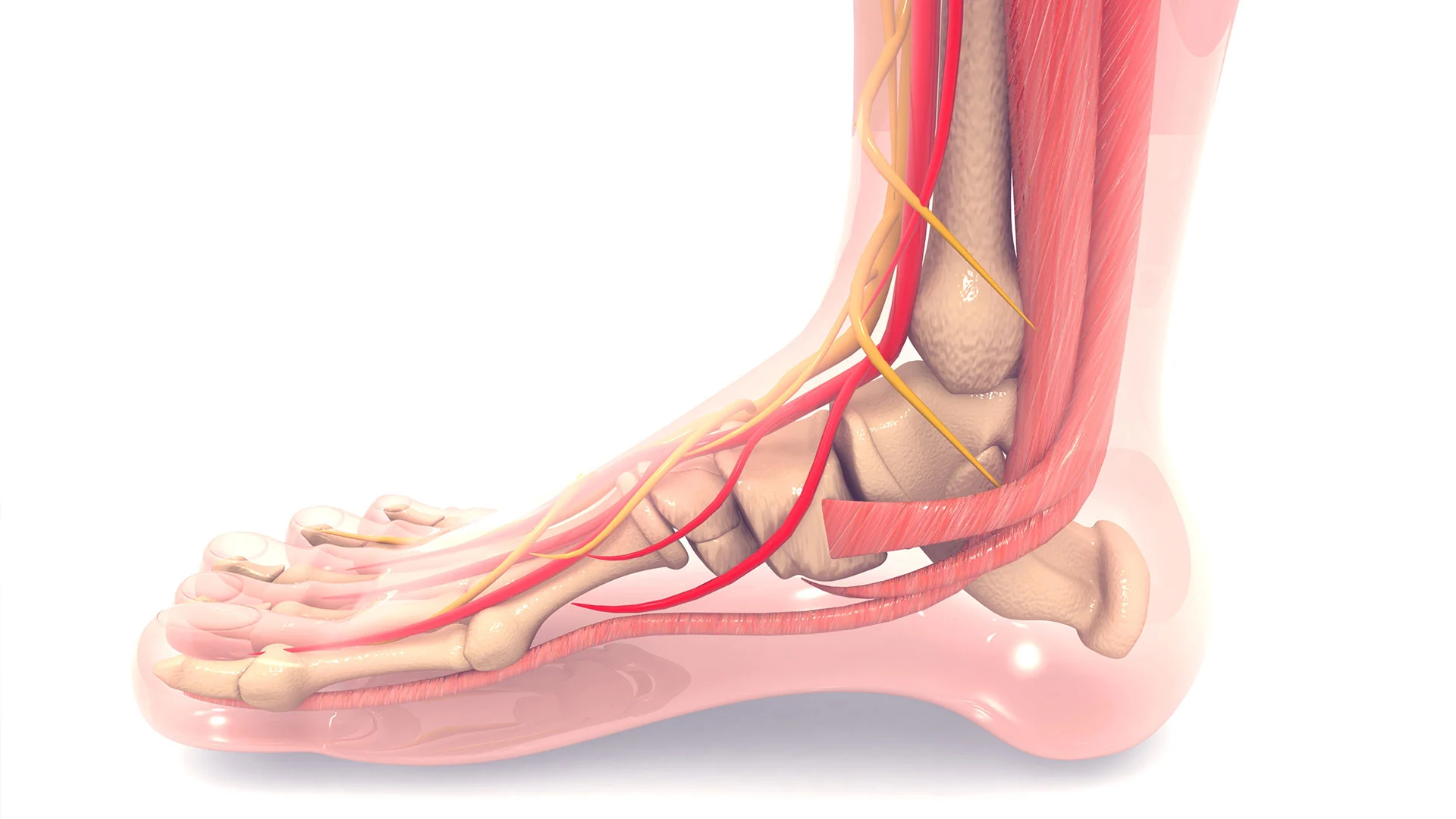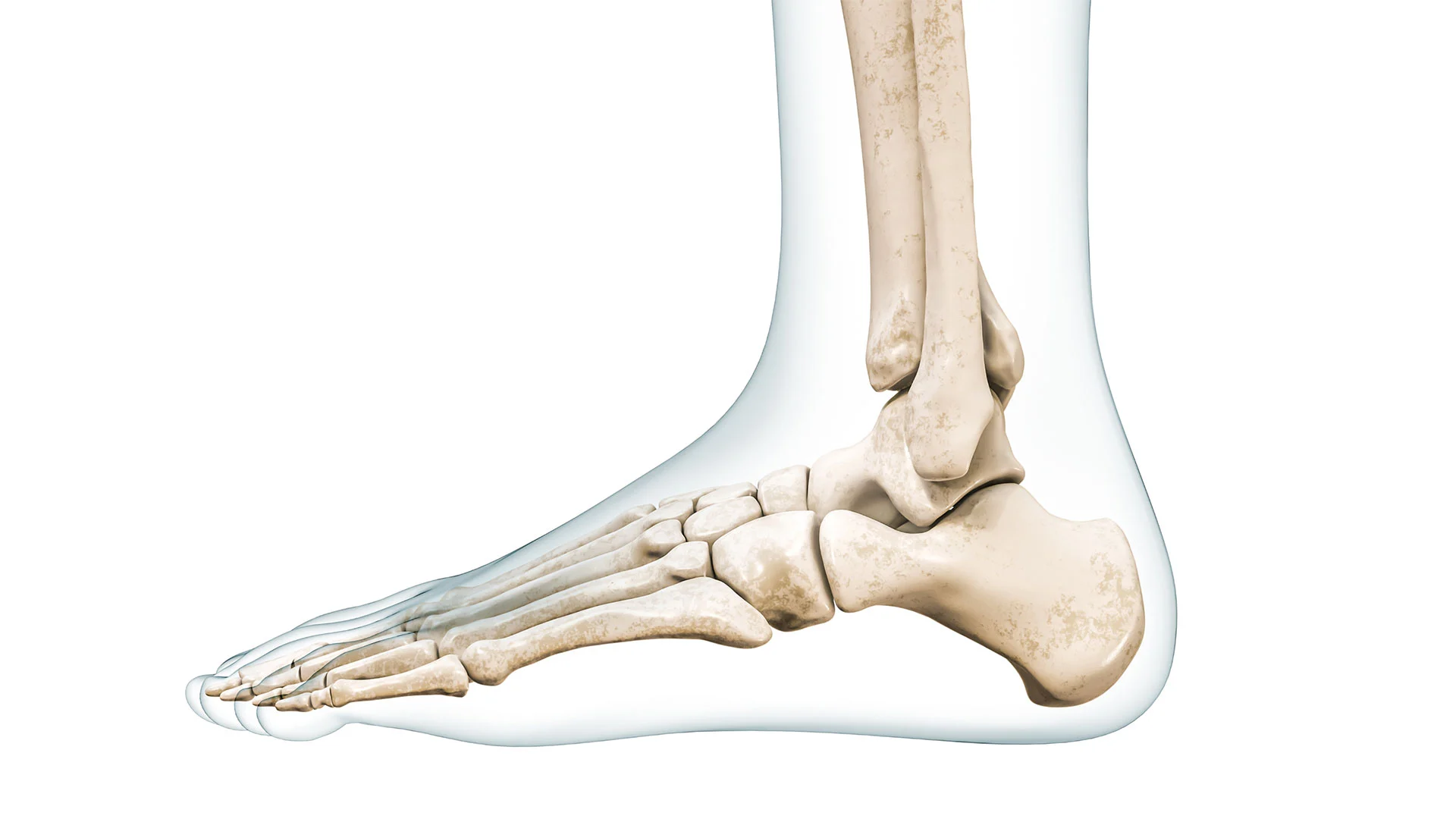There are 26 of them per foot, plus 33 joints, 20 muscles and 114 ligaments. This makes the feet one of the most complex parts of the body, together with the hands. The structure of the foot is very similar to that of the hand. From a purely anatomical point of view, we could control and grasp each toe and each finger individually. However, in the course of evolution and with the straightening of the body, the feet have adapted to their new function: The gripping function has become a supporting function that promotes upright walking.
The foot is divided into three sections: the tarsus, the metatarsus and the toes. The tarsus connects the midfoot to the lower leg and consists of seven bones, including the talus and the calcaneus. The metatarsus consists of five palpable metatarsal bones that are connected to the big toe. The toes, on the other hand, consist of tubular bones with two to three phalanges and are similar to the fingers, but less mobile. Many people believe that the toes, as individual limbs, fulfil the function of maintaining balance. However, a bone plate would also be sufficient for this purpose. In fact, the toes are highly mobile in order to be able to push off when walking, which strengthens the foot muscles. If we do not allow the toes to do this - for example, because the foot is in a stiff shoe for most of the day - the muscles become weaker, the arch of the foot flattens and a deformity may develop. To avoid this, people should regularly walk barefoot or actively practise foot gymnastics.
DO YOU KNOW THE FIT-DAY®?
With the FIT-DAY® concept, we pursue a holistic and individualised foot consultation approach.
LEARN MORE ➔


